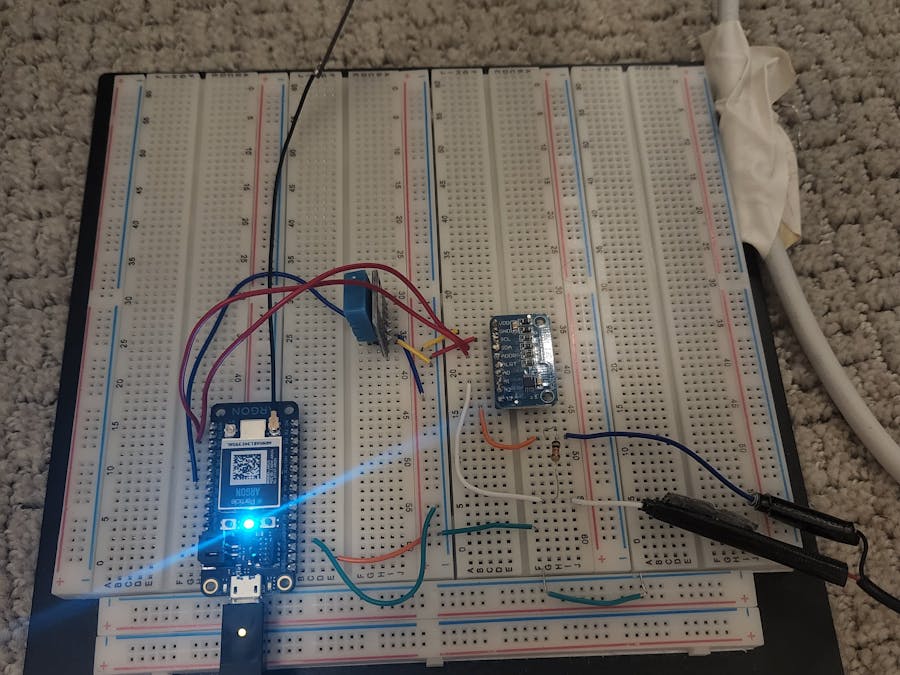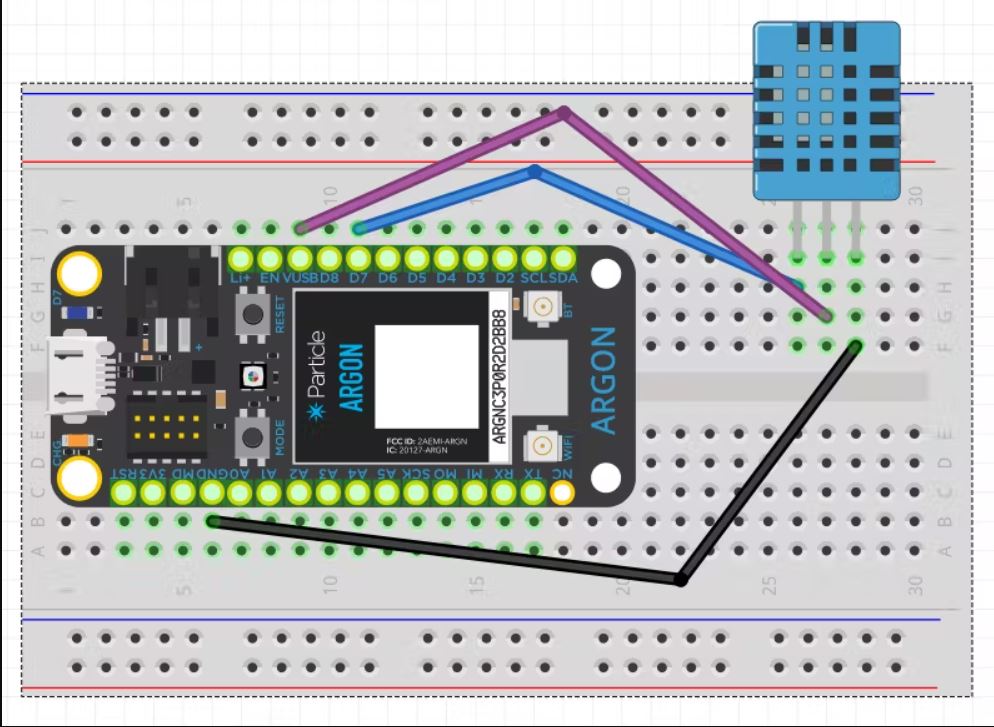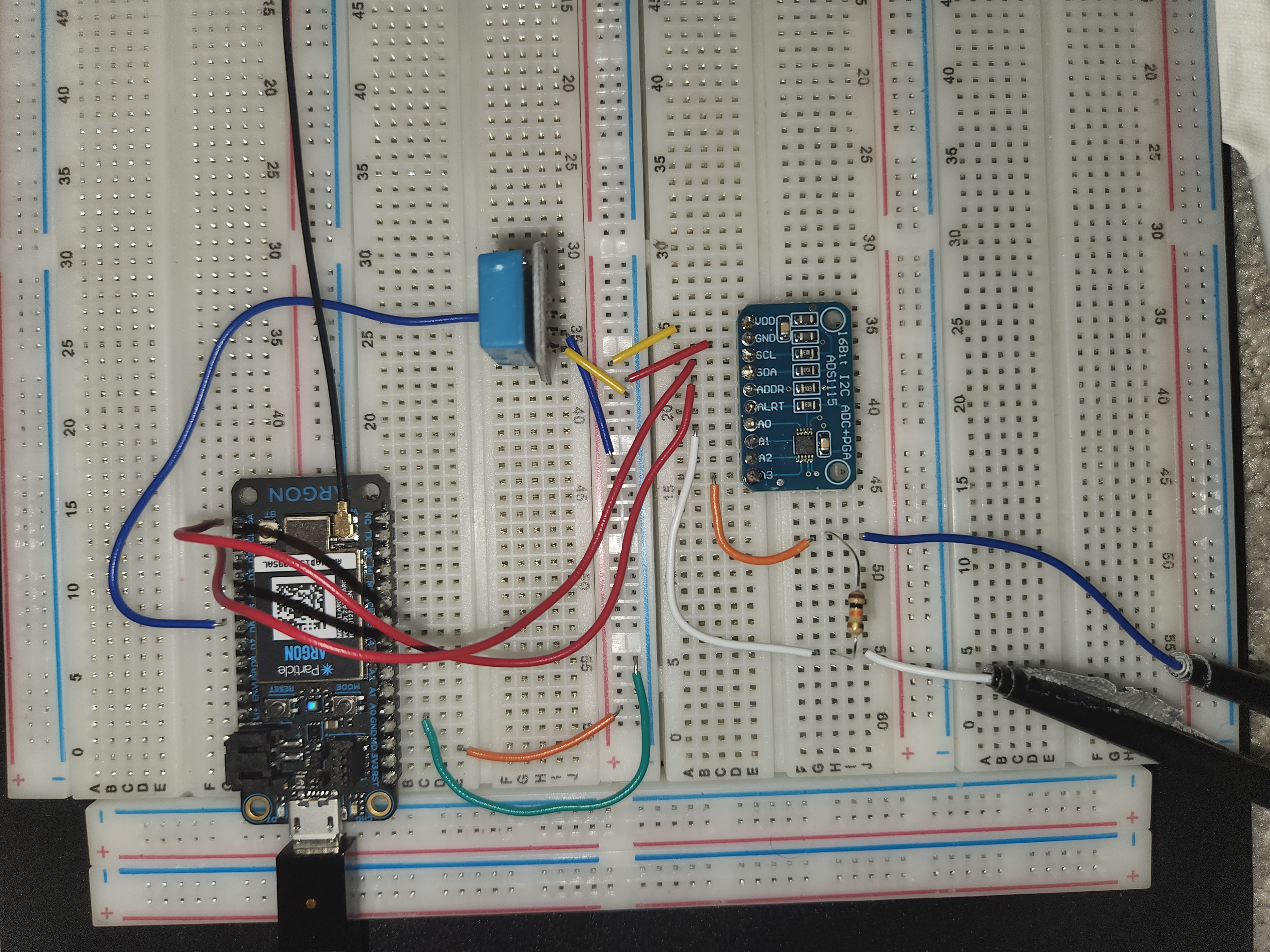Temperature and humidity are important factor in a computers lifespan and performance. The hot components reliability and performance are diminished overtime. Humidity makes dust more likely to buildup on components resulting in poorer heat conductivity and higher likelyhood of electrical discharge.
Server efficiency is a useful metric that many homelab creators neglect to collect data on. Using a clamp transformer to measure the current through the cable to the powersupply of the server. This transformer creates an AC voltage relative to the current running through the wire it is clamped around. This AC signal is then measured by an ADS1115 to determine its peak to peak voltage. This is then converted to the approximate power usage of the server. While this isn't as accurate as I like, in retrospect my choice of components was not optimal and if I were to redo it I would choose better components that are actually meant to work together. One issue that I was never able to completely solve was the transformer building up a DC offset that could not be removed with a pull-down resistor. This is the primary reason for power reading inaccuracy as the ADS1115 has trouble reading it.
You can continue to see the reading inaccuracy in the other two sensors that will give a fairly consistent reading with some random inaccuracies. You will see a spike in temperature and a drop in humidity due to testing the sensors with a hairdryer.
We were able to communicate the data between the Argons to set up an alert when the temperature breaches 90 degrees Fahrenheit. This was initially tested without the restriction to confirm data communication as seen below. The Argon receiving the data and sending the alert is "kitty_morphing" and the Argon producing the data is "Charlies_Argon_humidity."
Below you can see a video of the Particle Argon communicating with the other and sending the alert when the temperature went over 90 degrees. To test this without putting our computers at risk, a hairdryer was used to get to and exceed 90 degrees. You can click the link here to watch the video.
Feel free to comment or ask any questions or recommendations about our project. We hope you were able to learn and see how this all worked.



_zhWsCcSEcl.jpg?auto=compress%2Cformat&w=48&h=48&fit=fill&bg=ffffff)







Comments
Please log in or sign up to comment.